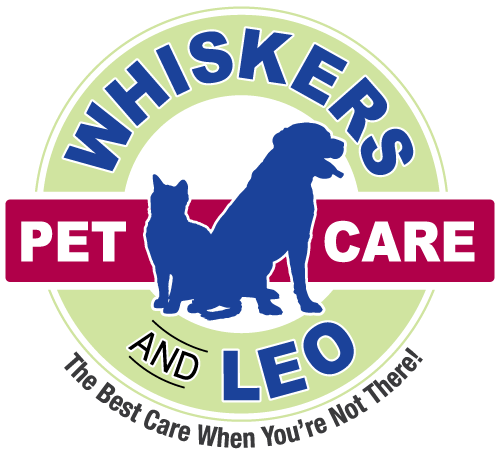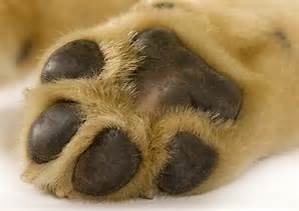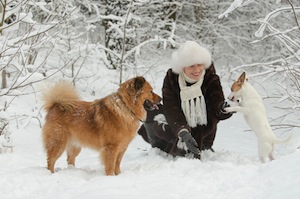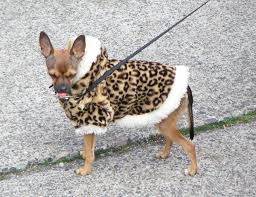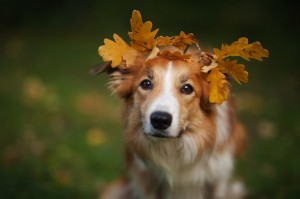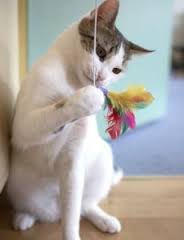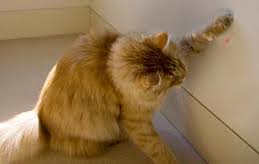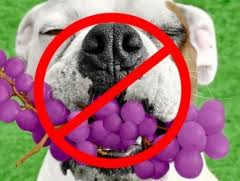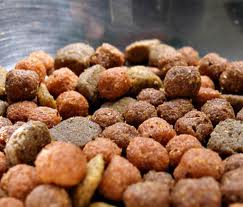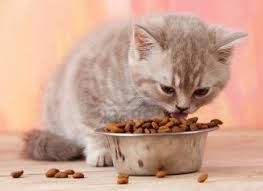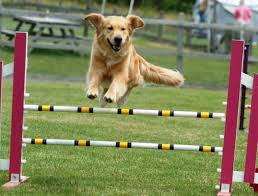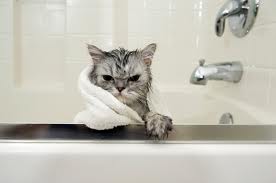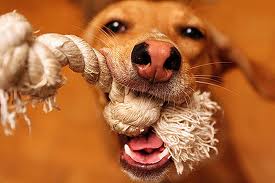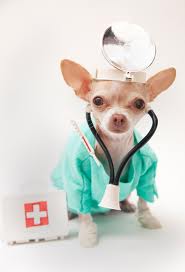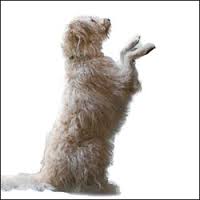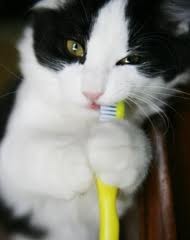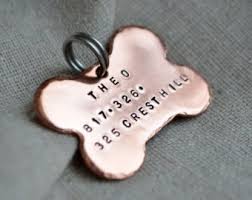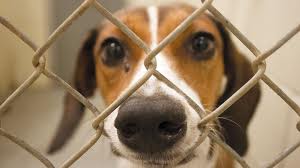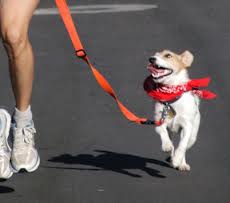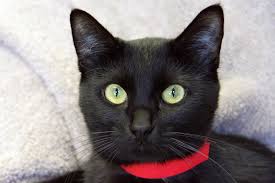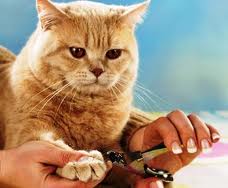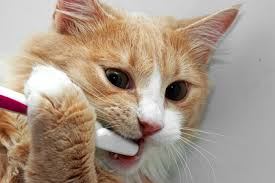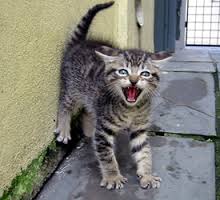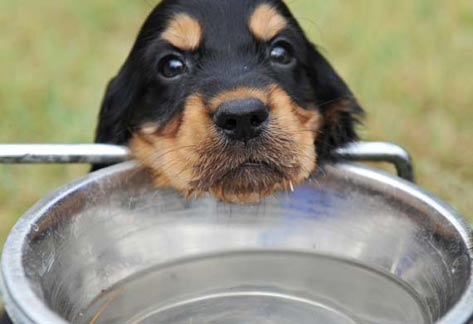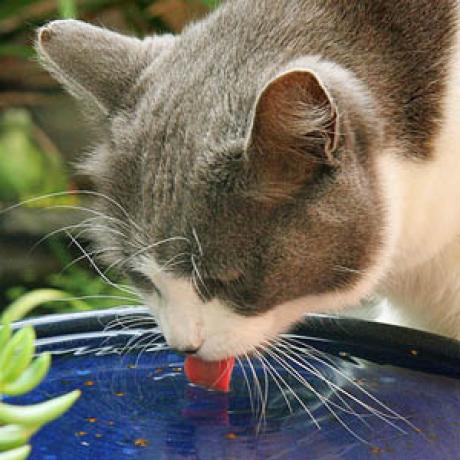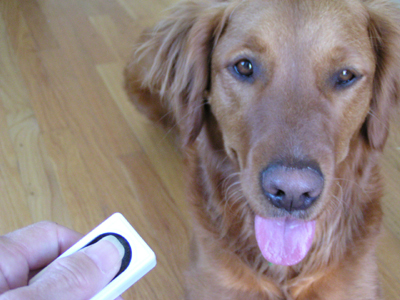Archive for the ‘Pet Tips’ Category
Dog Food: The Good, The Bad and The Ugly
Dog Food: The Good, The Bad and The Ugly
The Good (On Dog Food):
Yes you have had a dog for years and think you know it all! And you may know a lot about dog food, but even if you do (and of course for those that don’t), it’s always a good refresher.
(1) Stick to protein rich dog food, which result in more energy for your dog, less health problems.
(2) Also give your dog only human grade dog food. Most dog foods are classified as “feed” which means its made up of meat from dead, dying, and diseased animals. Yuck!
(3) The least processed the better. Canned and kibble go through such extreme processing to make them shelf stable. It’s much easier to absorb nutrients, and there are more nutrients in foods that are less processed.
The Bad (On Dog Food):
(1) Stay away from wheat & processed grains.
(2) Be weary of dog food that is made up of “meal.” If the word “meal” comes after a mean on the ingredients list of your dog food then its not real meat, its a by product which can also contain feathers, grease and whatever else is lying around.
(3) Stay clear of preservatives, which most commercial brands use to extend the shelf life of their dog food. Some preservatives used double as pesticides- they are not even permitted in the UK, but the good old US of A allows them of course!
(4) Don’t feed table scraps! No need, and nothing good will come from it (unless you like a fat begging dog at your tableside, j/k, well not really!). Also remember never ever feed your dog: chocolate, onions, grapes, raisins, bones and macadamia nuts.
The Ugly (On Dog Food):
The FDA doesn’t control what manufacturers are putting in our pet’s food! So we must ourselves be very diligent, because as you know the saying ‘what we eat is what we are’ goes for dogs too! And you don’t want your dog to be a sick animal.
Side Notes:
(1) Wash your dog food bowl regularly, whether you give him dry, wet or raw, and water bowl for that matter. If you wouldn’t eat off of the same plate every meal why should he? (Hopefully I’m not assuming too much! LOL)
(2) Feed your dog the correct portions of food, read labels, talk to your vet. You are not helping your dog by over feeding him!
(3) Keep your dog hydrated- they need a lot of water! To help your dog drink more, wash his water bowl daily, and give fresh water at least with every meal!
Final Thoughts:
I think my dog eats better than me (actually I know he eats better than me) but that makes me happy knowing that he will live his longest healthiest life that I can give him. Yes it’s hard to resist that cute face begging you for some food off your plate, but just remind yourself you would rather have your dog live a long healthy life (than a fat beggar), if so then just give him a hug and a pat instead, or better yet, play a game of fetch with him after you eat!
Here’s a great source to check out. You can look up the brand of dog food you are feeding your pup, and see if its worthy enough! Dog Food Advisor
Calm Dog with Calming Signals- Part 2
PART 2 OF THE SERIES – Calm Dog with Calming Signals
More Signals to Have a Calm Dog
8. Down: Lying down on his back, belly up, is submission, and lying down with his belly to the ground. You can use it when your dog is stressed and trying to get attention, lie down either on the sofa or ground to calm dog.
9. Yawning: Your dog may yawn in many situations, such as when you go into the vet’s office, when there is a loud fight, when a child goes to hug him, etc. You can use it when your dog feels uncertain, a little bit scared, stressed or you want him to calm down a bit.
10. Sniffing: Sniffing can be a swift movement down towards the ground and up again. Or a dog may continue to stand with his nose down to the floor until the problem is over. However, dogs also like to sniff to explore, so you need to look at the whole situation to be sure what it is. Its hard for people to use this signal themselves, but if you want to try you can sit on the ground and pretend to scratch the grass or examine something on the floor.
11. Curving: This signal happens a lot in the city life, since our dogs are on leashes, and is the best way for dogs to meet! You’ll often see two dogs curving their bodies, and sniffing each other’s behinds, or one sniffing while the other turns away. Mature dogs usually do not go straight toward each other, because it is impolite to do so (puppies on the other hand don’t know this yet!) You can use this signal easily, but not approaching a scared dog directly, or even changing directions a little first
12. Wagging Tail: A wagging tail is NOT always a sign of happiness. You need to look at the whole picture in order to interpret it. If the dog is crawling towards you, whining, or peeing, the wagging tail is a white flag, trying to make you calm down. You cannot use this signal, because you have no tail to wag 🙂
Non-Calming Signals
There are other types of signals too, like staring, walking straight towards someone, standing over another dog, growling, barking, showing teeth, these are all threatening signals. Other signals can be excitement such as raising of hackles and tails.
Observing all of these signals is important in your dog and in other dogs. Observe your dog at home, when visitors come, etc. While out walking your dog, or at the park, observe all the dogs behavior at the park, its quit amazing how quickly you’ll pick this up and learn how to have a calm dog.
The Stressed Dog
A dog feels stressed just as humans, when they feel unable to cope. Usually when they get stressed they start to use calming signals to try to ease the stress. SO knowing these calming signals will help you to see when your dog is feeling stressed.
A dog with constant high stress will be much more likely to get stomach problems, allergies, and heart trouble. They will be faster and more violent in their defense.
What makes a dog stressed?
- Direct threats such as violence, anger, aggression in his environment
- Jerking at the lead, pushing him down, pulling him along
- Too many demands in training and daily life
- Too much exercise for young dogs
- Too little exercise. If you need help exercising your pup, just give us a call- Whiskers and Leo Pet Care!
- Hunger
- Too much noise
- Being alone
- Too much over excited play with balls etc
- Never being able to relax
- Sudden changes
For example, a dog can become stressed and therefore aggressive because of its environment, and yes of course it can be genetic, but more often than not, its something in the dog’s life. There is no reason or excuse to punish , be violent, threatening or forceful towards a dog or demand too much of him. All of these things can make a dog stressed, and stress can make him ill. He can become reactive more quickly, showing aggression because he has a higher defense mechanism.
How to Identify Stress:
- Restless
- overreaction
- use of calming signals
- Scratching
- biting himself
- diarrhea
- shaking
- chasing his tail
- panting
- shivering
- loss of appetite
- allergies
- Fixation on certain things- glimpses of light, flies
- Looking nervous
- behaving aggressively
What can we do about stress in our dogs? Some basic ideas….
- Teach ourselves to see, identify and use calming signals!!
- Change environment and routines wherever possible
- stop using harsh methods, violence and painful things in training (like shock collars, prongs etc)
- Avoid hunger, Thirst, extreme cold or heat.
- Make sure he has the opportunity to go to the bathroom as much as he needs- again, if you need help exercising your pup, just give us a call- Whiskers and Leo Pet Care!
- find your dog’s correct level of exercise, not too much or too little
- Let the dog be part of the pack as much as possible
- closeness, touching, massage, lying close together without keeping your dog there by force
One of the best ways to reduce stress and have a calm dog is to be able to communicate with dogs. When you can make yourself understood by dogs, its a wonderful feeling- calming signals are the key!
Are Raw Diets Good for your Pets?
My Valentino has a very sensitive stomach, and a couple of years ago, he had chronic diarrhea for over a a year- poor thing! During that time, I tried every food (meaning all healthy kibbles), vet RX food, just about everything, and nothing worked until I found raw. At first, I’ll admit, I wasn’t a fan because its expensive, its gross and it requires more work than just dumping some kibble in his bowl. But, as anyone who knows me, knows I would do anything for my dog, so I tried it – and his chronic diarrhea went away, his itchiness went away, his coat is always shinny, and people cant believe he’ll be 7 years old because he’s in such amazing shape!
Feeding a whole, raw food diet has been associated with:
Increased energy
Healthier skin and the elimination of itchy skin conditions
Shinier fur with less shedding
Healthier teeth, gums, and better breath
Firmer muscle tone with increased strength and mobility
Healthy digestion and smaller, firmer stools
Stronger immune system
Better weight management
Raw food is also believed to help mitigate and prevent:
Cancer
Diabetes
Kidney and liver disease
Heart disease
Pancreatic disease
Autoimmune disease
Cats and dogs are natural carnivores. They have long, sharp teeth designed for meat eating, and their digestive tract is much shorter and secretes enzymes that enable them to safely consume raw meat. Their stomach acids are so much stronger than ours that they tend to kill off almost all pathogenic bacteria anyway. Raw food is high in protein and the natural nutrients that your pet needs.
Most processed kibble and canned pet foods are the equivalent of junk food for your pet. The intensive manufacturing processes create an inferior and biologically inappropriate product that is low in nutritional value and lacks vital food enzymes. Feeding these foods can lead to a negative effect on our pet’s health. Raw, whole ingredients will support and optimize a healthy immune system and wellness.
If you do the switch, don’t be alarmed when your dog poops a lot less, and it’s much smaller in size- this is supposed to happen because the food he is eating is high quality and its being used instead of excreted.
Why not give it a try! There’s plenty of brands out there to make it easier than figuring it out on your own, and in the long run, you will save money on your pet’s medical bills, good luck!
Tips to Protect Your Pups Paws in the Winter Months!
Winter can be tough, especially on your dog’s paws! Take some steps to ensure overall health for one of your dog’s most important assets- his paws!
(1) Simple! Just check your dog’s paws regularly- meaning daily. Inspect for abnormalities, scraps, cuts, injuries. Press down on the pads to see your dog’s response. Check between their pads for lumps, cuts, or discoloration as well.
(2) Trim your dog’s hair between its paw pads- in order to keep the snow and ice from sticking to it and causing frostbite!
(3) Toughen up your dog’s paws by walking your dog on cement of pavement regularly.
(4) Moisturize your dog’s paws to prevent cuts, cracking or peeling. Bag Balm made especially for pets is a favorite to use and works wonders- just massage it in!
(5) Use paw wax to add a layer of protection on your dog’s paws especially when its snowy, icy and salty outside!Musher’s Secret paw wax is a favorite, but you can also get away with vaseline or something of that type.
(6) To melt the snow, use Safe Paw Ice Melter, instead of other salts. It will not irritate the pets paws.
(7) For serious protection consider using dog shoes or reusable rubber dog booties, or just socks. I have all of the above, and since my dog Valentino is very active the shoes tend to slip off sometimes. But if your dog is very sensitive to the cold/ice/salt and the Mushers doesn’t cut it, I would try it out! Take your dog over to the store with you to try them on, so you know you are buying the right size, and can even get pointers how to put them on.
(8) Wash/wipe your dog’s paws after going outside especially to get the salt off their paws!
Enjoy the tips, and try to enjoy the winter months with your pups!
Anything & Everything About Dog Walking!
Whether you are a new dog parent, or a veteran owner, there is always room to learn!
Dog walking is so important because dogs need to explore, hunt, and discover new sights and smells, its part of their nature. Even if you have a backyard or a ton of toys, dogs still need their walking time. In addition, dog walking is a form of physical and mental exercise for your pup! And a great time to bond, and practice those commands you taught him.
Basic dog walking supplies include a safe sturdy harness/collar and leash that cannot break (please do not use retractable leashes, esp. in city settings, lets keep those reserved for hikes and the country); poop bags; bottle of water and drinking mechanism for those hotter days; treats for positive reinforcement.
When walking your dog, try to take a new path/route, don’t always walk the same path, your dog will be so thankful for all the new smells and sights!
Remember that Whiskers and Leo is always here to answer your dog walking questions! Just shoot us an email at info@whiskersandleo.com.
Teach Your Dog To Do NOTHING!
This is a great read for all dog owners! I do something similar with my dog Valentino, but I labeled it LEAVE IT. So anytime he is looking/staring at someone/something, and I think he may start to bark etc, I say LEAVE IT, if I see something on the floor I don’t want him to touch, I say LEAVE IT. Its a great command, and the below, is also a great alternative to reward your dog for behaving!
“Reinforcing your dog for doing nothing is a technique I learned from my most amazing mentor, Kyle Rayon. The idea is, when you see your dog doing absolutely NOTHING, that is the moment you want to reinforce him with attention and treats. For example: Your dog is standing calmly at your side on a loose leash, and an excitable dog comes out of the blue from around a corner. As your dog sees the other dog, you pop a treat in your dog’s mouth while he is standing there DOING ABSOLUTELY NOTHING! By doing this you will reinforce your dog for doing nothing in this situation, making it more likely he will do nothing when in a similar situation in the future. Don’t wait the 3 seconds for when your dog starts barking his head off at the other dog. Another example is: You are in the street standing and talking to a friend on a walk, while your dog is next to you doing nothing. Feed your dog a treat for doing nothing while you chat. Don’t wait until your dog starts whining, or pulling or jumping on you to give him attention. “Nothing Behaviors” are highly overlooked by many dog trainers. Many trainers focus on training dogs to “Sit”, “Down”, and “Stand”. But they forget to reinforce all the wonderful “Nothing Behaviors” that the dogs are already doing!
Tip: When reinforcing your dog for doing nothing, you need to get the treat to him before he thinks to look at you. This is because you want to “take a picture” of that calm behavior he is doing at that exact moment in time with the reinforcement, so that exact behavior will be repeated in the future. If your dog turns to look at you as you feed him a treat, you will be “taking a picture” only of a dog that is excited about the food that he is about to eat. Feeding him a treat while he is looking for his treat will not at all reinforce the calm nothing behavior you had hoped for, so wait until your dog is not thinking about the food again, before giving your dog the treat.
You can get the food to your dog while he is not looking at you, by having food already prepared in your hand, so that you don’t make a noise before you move to feed your dog. You can also toss a treat between your dog’s paws so it is less expected, or come from behind your dog with the treat to get it to his mouth. If you have a dog that is so over-aroused by food that he never looks away from the food, teach him to settle around food first.”
From website: http://dogmantics.com/train-your-dog-to-do-absolutely-nothing/
BEWARE: High Rise Syndrome
When summer comes around, many pet parents eagerly open windows to enjoy the weather. Unfortunately, they are also unknowingly putting their pets at risk. Unscreened or unsecured windows pose a real danger to cats (and some dogs too!), which fall out of them so often that the veterinary profession has a name for the complaint: high-rise syndrome.
FACTS:
(1) Cats have excellent survival instincts, and most cats fall accidentally from windows etc.
(2) Cats have an incredible ability to focus their attention on whatever interested them- like a bird etc- which can cause distraction, and may loose their balance and fall.
(3) Because cats have little fear of heights, pet owners assume they can take care of themselves. But just because cats have claws and can cling to some things, they cant cling to all things, such as concrete, brick or window ledges.
(4) When cats fall from higher places, they don’t land squarely on their feet, instead they can land splayed apart, which can cause head and pelvis injuries.
(5) Its a misconception that cat’s wont be injured if they fall from one or two story buildings, because these short distances may not give them enough time to adjust their body posture.
PREVENT HIGH RISE SYNDROME:
(1) Install snug and sturdy screens in all windows.
(2) If windows have adjustable screens, make sure they are tightly wedged into window frames.
(3) Note that cats can slip though childproof window guards. These don’t provide adequate protection!
Spring Tips for Your Pup!
Spring is in the air! Just some quick reminders because we know you love your dog, and we do too!
(1) Sticks are a NO-NO! Have your dog play with a frisbee or tennis ball instead. Sticks can splinter, and can cause choking and severe injuries to your pup!
(2) Before getting new spring plants, check THIS SITE out to make sure you are not poisoning your pup!
(3) Use pet-friendly products for spring cleaning! Make sure your products are dog-safe, and also keep them in a cabinet your dog cannot get to- you never know!
(4) Start flea and tick prevention if you haven’t already!
(5) Watch for signs of seasonal allergies. Some dogs develop allergies to common seasonal plants, and most dogs react with skin problems. Talk to your vet professional regarding any symptoms your dog may be experiencing.
Why Is It Dangerous To Leave Your Dog’s Collar On While In The Crate
Your dog’s crate should be his or her’s safe haven- a place to relax, a place to sleep, a place of comfort and safety. Unfortunately, there have been stories about dogs accidentally strangling themselves in their crates while their owners are not home. It is such a tragedy, and one that can be avoided, so please please please adhere to these safety tips!
COLLARS
A dog’s collar could get caught on the latches or the bars of the crate. When my Valentino was a puppy, he figured out how to escape the crate (and not through the door!!) And a lot of dogs will try to do this. Well if he had a collar on, he could have gotten it stuck while trying to escape. If they do get stuck, they panic and try to get themselves free which usually only makes it worse, and they can end up injured or strangle themselves 🙁
TAGS AND HOOKS
Tags and hooks can also catch up on the bars or the doors of the crate- which is another reason why you should remove your dogs collar before he or she is put in the crate.
CHEWING
Some dogs out of boredom, will try to chew on their collar while in the crate. Not only is this expensive to buy a new collar, if your dog swallows part of the collar, this may require expensive surgery too! Also do not leave your dogs collar on top of the crate (esp. with wire crates), because the dog may be tempted to reach it, and pull it into the crate to chew on it.
SCRATCHING
Another thing that can happen is your dog can scratch at its collar, to try to get it off, and hurt himself in the process, by either scratching the skin raw, or getting its leg caught in the collar itself.
Treat your puppy as a toddler, and take all precautions!
Getting a Kitten? Read these Nutrition Tips!
 Kitten’s nutritional needs differ greatly from an adult cat’s requirements. After all, that little ball of fluff may double her weight during the first few weeks in her new home. And your new little kitten, will need extra energy for playtime!! Also, don’t forget to get your new kitten to the vet as soon as you can for his or her’s first check up!
Kitten’s nutritional needs differ greatly from an adult cat’s requirements. After all, that little ball of fluff may double her weight during the first few weeks in her new home. And your new little kitten, will need extra energy for playtime!! Also, don’t forget to get your new kitten to the vet as soon as you can for his or her’s first check up!
WHAT KITTENS NEED
All cats, kittens included, have similar needs for fat, most vitamins and some fatty acids. But when it comes to protein, a growing kitten needs more that an adult cat, along with more minerals, amino acids, and some essential vitamins. Thirty percent of a kitten’s energy source should come from the protein source in his or her food. Your vet may have recommendations for a nutritious kitten food. Also this is a great website for information on nutrition- http://bestcatfoodadvisor.net/.
NOT JUST ONCE A DAY
You know how active kittens are, so you have to make arrangements for your kitten to eat 3 to 4 meals a day. One meal a day cannot supply a full day’s energy store for a kitten, with all the playing, racing, chasing, pouncing and stalking that takes place!
Don’t forget unlimited access to clean, fresh water 24/7. The water bowl needs to be checked frequently, as bowls can tip. Just because there was water in the morning, doesn’t mean there will be water left in the afternoon!
Problem Barker??
 Quick helpful hints for your problem barker!
Quick helpful hints for your problem barker!
(1) Try not to yell when he’s barking, he just thinks you are joining in the fun!
(2) Pick a word you will use every time, and stick with it, whether its HUSH, NO BARK, etc. Be consistent, and don’t yell your dogs name to make him stop barking.
(3) Manage the situation properly- for example, if he is barking out the window, shut the blinds.
(4) Provide a stimulating environment for a bored dog- most dogs bark when bored.
(5) Make sure you are NOT rewarding the barking and confusing your pup. For example, your dog barks like crazy right before you feed him, then do not feed him until he stops barking, or else you are rewarding the barking. It may take forever the first time, but be patient 🙂
(6) If you think he’s barking because he’s nervous, maybe contact a professional positive trainer to help you.
AND JUST REMEMBER, EVERYTHING TAKES TIME, AND BE CONSISTENT. IT’S VERY EASY TO CONFUSE OUR PUPS SINCE WE TALK A DIFFERENT LANGUAGE 🙂
Battle Cabin Fever!
Pets can get the winter blues too! Even if you live in a warmer state, the change of season affects pets too! Pet owners who ignore their pet’s needs for winter stimulation will find their companions gaining weight, becoming irritable, and sleeping too much. However, here are some steps that will make you and your pet happier during the long colder months!
(1) Brighten the Lights: Pets respond to illumination like we do- they get peppier when the lights are brighter !
(2) Encourage Play Time: Just because its cold outside, doesn’t mean you can’t have some indoor stimulation! Put your timer on, and play with your pet for that whole time period.
(3) Recalculate Food Quantities: If a dog or cat is not outdoors as much, you may want to lower their food intake, so they don’t gain winter weight!
(4) Enhance Scents Around the House: Scented goodies can keep dogs busy as they try to find the course of the smell. Cats like toys with catnip and/or scratching posts.
(5) Go Outside: Bundle up (and bundle up your dog too) and do get that outdoor time every day!
Fall Tips to Keep Your Pet Safe :)
Help keep your pet safe this Fall by keeping in mind these tips!
(1) Dogs can get the flu too! If you see a dog coughing, keep your dog away. Before going into a dog park, check out all the dogs first, to see if you notice any symptoms of a sick dog. If your dog does develop a cough, contact your vet!
(2) Holiday stress can affect your pets too! Lots of unfamiliar faces and loud talking can stress your pet out. Exercise your dog beforehand and give him a special chew toy to keep him distracted. If he still seems stressed, put him in a quiet room away from all of the commotion. Be sure cats have access to a quiet room where they will probably hide all on their own 🙂 For other small caged pets, transfer their cage to a quiet area too. If you are getting ready for a trip, try to remain calm and keep your anxiety down (your pets can sense your stress). Also, try to pack where your pet cannot see the suitcase, some pets get stressed out as soon as they see you packing!
(3) Keep pests out! As the weather gets colder, rats and mice may decide that your house would be a great place to stay warm and dry. Be mindful of how you prevent these pests from entering your house. To keep them out, close up any entry holes and choose anti-rodent products that are non-toxic. Rodenticides are extremely toxic to dogs and cats and other small pets, so it is best to discuss a safe control plan with a professional exterminator and your vet.
(4) Keep school supplies like markers, pencils, glue sticks away from your pets and off the floor- they can be toxic if ingested!
(5) Snakes can get grumpy as they are preparing to hibernate and don’t take kindly to being disturbed by curious pets. To protect your pets from venomous snake bites, know which snakes are poisonous and where they usually hibernate. Walk your dog on a leash away from those areas.
(6) Mushrooms that pop up in your field can make your pet sick if they eat them. A few of the mushrooms are actually deadly, so if you know your pet has eaten one go to your vet ASAP.
(7) Just like people, your pets can have seasonal allergies too! Symptons are sneezing, itchy skin, ear infections and watery eyes. Call your vet if you think your pet has allergies to discuss testing and a treatment plan.
(8) Car coolants are highly toxic to pets. Clean up any spills immediately, keep any coolant out of reach of pets, and dispose of used coolant. You can also switch to a propylene glycolic-based coolant- while it isn’t completely non-toxic, it is significantly less toxic than the other engine coolants.
HAPPY FALL!!
Get A Real Pet Sitter!! Don’t be Tricked by a So-Called Pet Sitter.
With more than 60 percent of households owning a least one pet, finding reliable pet care is likely a concern for the majority of pet owners. For these pet owners, we have an important piece of advice: Don’t be tricked by so-called pet sitters.
Many pet owners, and even news outlets, use the term ‘pet sitter’ incorrectly, referring to anyone—from a family friend to the neighborhood teenager asked to walk a dog—as a ‘pet sitter. It is important that pet owners understand that pet sitting is a professional career and professional pet sitters offer peace of mind that other pet-care options cannot.
Even for pet owners committed to using professional pet sitters instead of friends or family, the search can be confusing.
With the influx of pet-care directory sites popping up in the last couple of years and news stories touting pet sitting as an easy way to earn extra cash, more and more people are deciding to cash in on the growing need for pet care.
Whiskers and Leo has offered pet-sitting services since 2008 and is a member of Pet Sitters International (PSI), the world’s leading educational association for professional pet sitters. In addition, we professionally background check and train all of our sitters, and of course we are insured and bonded with the proper insurance, and I have passed the CPPS test and obtained the Certified Professional Pet Sitter (CPPS) designation.
PSI President Patti Moran—who also founded the pet-sitting industry more than two decades ago—offers additional advice for pet owners. “Simply being listed on an online pet-sitter listing—or even on a nationally-publicized directory—does not make a pet sitter a professional, qualified care provider,” explains Moran. “Anyone can post a profile advertising pet-sitting services, so it’s important for pet owners to take a closer look to ensure they are hiring a real pet sitter.”
Whiskers and Leo advises pet owners to ask these important questions when interviewing a potential pet sitter:
- Is the pet sitter insured and bonded?
- Can the pet sitter provide proof of clear criminal history?
- Does the pet sitter provide client references?
- Will the pet sitter use a pet-sitting services agreement or contract?
- Is the pet sitter a Certified Professional Pet Sitter (CPPS) and/or has he or she participated in pet-care training, such as pet first aid?
- Is the pet sitter a member of a professional and educational association, such as Pet Sitters International?
- Does the pet sitter have proper backups in place, in case of an emergency?
- Does the pet sitter use a professional scheduling tool, and/or a GPS check in/out service for extra peace of mind?
Sweater or No Sweater??
I myself have about 10 different coats/sweaters for my dog Valentino, but I know some people tease me about this, and don’t see a need- saying, well he already has a coat on, his fur!
If Valentino was a breed of dog that was acclimated to cold weather, like Huskys and Malamutes are, I would certainly not put a coat on him. It’s not that I simply enjoy putting clothes on my dog, I certainly feel the opposite actually- its one more step, that I don’t want to do, but I do. WHY? Because Valentino has a thin body type, and very short fur, with some of his skin even exposed. Also a big sign is that his whole body shakes when it is cold outside.
So a good general rule of thumb is, if you have:
(1) Small dog;
(2) Elderly dog or chronically ill (such as arthritis);
(3) Breed with thin body type, especially those with short fur;
Then I would purchase a coat or sweater for your pup!
These 3 types of dogs have more difficulty generating and retaining enough body heat on their own. Also, if you are keeping your heat down in your house/apartment during the day, you might think of keeping a sweater on your pup inside as well.
Even if your dog doesn’t need a coat, it certainly won’t hurt him! I also put a light rain coat on my dog when its raining even if its not cold, so there is less clean up when I get home! And when its snowing, its also good to invest in a pair of booties for your pup to protect their sensitive paw pads from the salt and chemicals used for de-icing.
Final rule of thumb – get a coat that compliments your dog’s coat and coloring 😉
Autumn Safety Tips
I love the fall!! There isnothing like crisp, cool air, the first months of school and luscious foliage to get you excited for the changing seasons. Your pet, too, is probably welcoming the break from hot, sticky weather. But pet parents, beware—fall is also a time of lurking dangers for our furry friends. Here are some things to look out for!
(1) The use of rodenticides increases in the fall as rodents seek shelter from the cooler temperatures by attempting to move indoors. Rodenticides are highly toxic to pets—if ingested, the results could be fatal. If you must use these products, do so with extreme caution and put them in places inaccessible to your pets.
(2) It’s back-to-school time, and those of you with young children know that means stocking up on fun items like glue sticks, pencils and magic markers. These items are considered “low toxicity” to pets, which means they’re unlikely to cause serious problems unless large amounts are ingested. However, since gastrointestinal upset and blockages certainly are possible, be sure your children keep their school supplies out of paw’s reach.
(3) Fall and spring and are mushroom seasons. While 99% of mushrooms have little or no toxicity, the 1% that are highly toxic can cause life-threatening problems in pets. Unfortunately, most of the highly toxic mushrooms are difficult to distinguish from the nontoxic ones, so the best way to keep pets from ingesting poisonous mushrooms is to keep them away from areas where any mushrooms are growing. Contact your veterinarian or the ASPCA Animal Poison Control Center immediately if you witness your pet eating a wild mushroom.
(4) In order to generate body heat, pets who exercise heavily outdoors, or who live outdoors, should be given more food during colder seasons. Make sure horses and other outdoor animals have access to clean, fresh water that is not frozen.
(5) Many people choose fall as the time to change their car’s engine coolant. Ethylene glycol-based coolants are highly toxic, so spills should be cleaned up immediately. Consider switching to propylene glycol-based coolants—though they aren’t completely nontoxic, they are much less toxic than other engine coolants.
(from the ASPCA.org)
Are You Feeding Your Dog Something Potentially Deadly?
Watching Dr. Oz recently, reminded me of this additive/chemical in our pet’s food (and in our food!) that has been linked to certain types of tumors in laboratory animals, according to the National Institute of Health.
The evil culprit is BHA (and also BTA).
Despite findings that this chemical may be linked to cancer, the FDA still permits its use as a fat preserver in food, and generally recognizes it as safe in low doses; however, who knows what “low doses” means and why even take the chance??? Moreover, we tend to feed our dogs the same food (and treats) day after day (unlike our own diets), so the accumulative exposure is worrisome.
There are a ton of other dog food and treats (and cat food/treats) that don’t use these additives in their products. Natural preservatives are considered safer, so most dog food companies avoid the use of these chemicals.
So 2 lessons learned here!
(1) READ your pet food labels, and ingredients list!
(2) When you read on a pet food label a particular fat ingredient has been “preserved with BHA” you know to stay away!
SAME GOES FOR CATS!!
Best Games for Cats!
Your cat is playful, curious and a hunter, and he wants to interact with you to show off his natural skills. Playing games with your cat is a great way to entertain him, as well as give him some extra exercise.
Cats love to chase and hunt, so it’s natural from him to want to exhibit these behaviors for you. Many cats, if given the chance to go outdoors, will actively hunt for birds and other small animals.
These hunting and chasing skills can be replicated in games that you play with your cat. Many cat toys that you’ll find in the store focus on the game of the hunt, and allow you to play along with your cat- like a feather, or a little mouse hanging from a string, or a ball that circles around a container – and most of the time just a box and a little catnip mouse keeps my cats happy and occupied.
Another great option for a game to play with your cat involves a laser. Your cat will be transfixed by the red laser light and try to catch it. This game can keep your cat occupied for a while and also provides exercise.
Also, playing on your bed, with your hand under the covers (to protect yourself) moving it back and forth, will entice your cat as well, and bring out the inner hunter or huntress!
If your cat loves treats, you can purchase toys that you can hide treats in, too.
It is very important to keep your cat engaged in games that are both enjoyable and a good source of exercise. Your cat will make it known if he is bored, and walk away from you or the toy. Your cat may be bored with one activity but another one might continue to entertain him. Mixing up the games and toys will help keep your cat happy.
Did You Know….(important for dog owners)
That Even A SMALL Amount of Grapes Or Raisins Can Be Deadly For Your Dog If Ingested!
Grape and Raisin Toxicity in Dogs (from PetMd.com)
Grape and raisin toxicity is well documented in dogs.
Dogs of any age, breed, or gender may be affected. One of the most serious complications of grape/raisin toxicity is acute (sudden) kidney failure with lack of urine production (anuria). However, kidney failure is not seen in all dogs after ingestion of grapes or raisins, and again, the reason why some dogs are affected excessively while others are not is still being studied.
Symptoms and Types
- Vomiting and/or diarrhea – often within a few hours; after 24 hours of ingestion vomit and fecal contents may contain pieces of grapes or raisin
- Loss of appetite
- Lethargy, weakness, unusual quietness
- Abdominal pain
- Dehydration
- Oliguria (passing only a small amount of urine)
- Anuria (complete cessation of urine)
- Kidney (renal) failure and death
Seek Immediate Treatment
This is an emergency needing immediate treatment. If you are positive that your dog ingested grapes or raisins, call your vet immediately. They will probably tell you to come in right away, and in the mean time they might tell you to induce vomiting as soon as possible, before the toxins in the fruit can be absorbed.
Prevention
Make sure all family members are aware of all the toxic foods for dogs ( including raisins, grapes, onions, chocolate, garlic, currants, macadamia nuts, human medications, fatty foods, alcohol, unbaked bread dough, candy, xylitol, etc.) Keep all of these foods out of your dog’s reach, and also monitor children very carefully if/when they are eating any of these foods.
Tip for Tuesday: 3/25/14- Keep your Pet Healthy!
Take 2 minutes out of your day to better your pup’s life! Go to http://www.dogfoodadvisor.com/ , enter the brand of dog food you are using into the search field, and check to make sure you are feeding your dog a top quality food!
For cats, check out this site!http://www.petsadviser.com/cat-food-advisor/
Winter Fun for Dogs!
Winter Fun for Dogs!
As a dog owner myself, I know how agonizing these brutal winter months can be with an energetic dog. Also, I’m very familiar with that guilty feeling because you are not stimulating your dog as much as when it’s warmer out- running with, biking with, playing with, eating with at outdoor restaurants, drinking with at Pier 13 — or just taking that extra long walk along the waterfront because it’s so beautiful outside.
Hopefully, some of these suggestions can help provide some relief to you and your pup during this extremely cold winter season!
GO SOMEWHERE NEW
When a client asks us to walk their dog on the same path everyday, we usually ask the client if we can switch it up instead, and here is the reason why: going new places, or just going on a different route offers the excitement and mental stimulation of new sights and smells, in addition to exercise.
I am definitely guilty myself of walking Valentino on the same path often, however I notice that when I do walk him on a different street, he gets really excited for the new scents (more so than I would have thought!). Or you could also get in your car and drive to a new dog park. I like Brookdale in Montclair because it’s bigger than any dog park in Hoboken, and its not too far if you have a car.
TEACH SOMETHING NEW
Did you know that mental exercise tires a dog more quickly and thoroughly than physical exercise? So teach your dog a new trick each week! Can your dog balance a treat on his nose? Shake a paw? Roll over? Crawl along the floor? Jump through a hoop? Play dead? Retrieve? Pick a new trick, and start training! Don’t forget that consistency is very important when training. Teaching your pup a new trick will also enhance the bond between you and your dog. And if you teach them a trick that also relates to obedience training- leave it, off, down – well, ever better!
Don’t underestimate your pup! Dogs love learning, love the challenge, love pleasing their owners, and of course love the treats that come as a reward! There are so many tricks you can teach your pup, I can’t even count how many Valentino knows. Also, you can teach them words alone. A dog can learn more than 100 words, close to 200. Valentino has been practicing the names of his stuffed animals. It sounds silly but they really do enjoying learning – “Bring Tigger!”
GIVE YOUR DOG A BONE OR A FOOD DISPENSING TOY
Chewing is healthy for dogs, and helps them relieve stress as well. Food dispensing toys are invaluable boredom busters. While rubber Kongs are great toys and can be stuffed with a great variety of treats and tasties, there are many other options on the market now — check out your local pet store!
Valentino’s new favorite chew toy is an antler, or a marrowbone.
KIBBLE HUNT
If you place your dog’s kibble in a food bowl, chances are the bowl is empty within 15 seconds and the dog gazes up at you upon finishing as if to say, “is that it?” You can put that food to work for you by making your dog hunt for it with his nose. Instead of dumping the food in his bowl, consider crating him, or putting him in another room, while you hide small piles of food in the house then release him to “kibble hunt.” Initially, make the piles very easy to find. As your dog gets better at this game, practice hiding the food in more difficult spots.
I actually use small treats when I play this game with Valentino. This is one of his favorites!
HIDE AND SEEK
Hide and seek is a great way to exercise your dog’s mind and body and recall skills. You can do this alone or with your friends or family. Hide (or take turns hiding if there is more than 1 person playing) throughout the house, calling the dog to you, and rewarding her generously with treats or maybe a game of tug once your pup finds you. If you are playing with more than 1 person, when the treats are finished, say “all done!” which is the cue for the next person to call him.
When I pay this game with Valentino, I start in easy hiding spots, and then make them progressively harder. I put him in a room that I am not going to hide in, say “STAY” close the door almost all the way, so he cant cheat and peek, and then once I’m hidden I say “COME FIND ME!” If he is stumped I give him hints, by calling out his name so he can follow my voice.
DO SOMETHING OLD WITH A NEW TWIST
Turn your dog’s favorite game into a training game! For every throw of the toy, ask your dog for some obedience behavior or trick as you hold the toy. As soon as your dog performs, give him some praise, then send your dog after his toy. Dogs adore this game, once they understand how it works. For working breeds, it also gives them a fun, satisfying outlet for their built-in drive to work with you.
After I started playing this game, Valentino eventually started throwing all his tricks my way- to try to guess which one I wanted!
ARRANGE A PLAY DATE
Dogs benefit from social interaction outside their family unit. If your dog gets along well with other dogs, find some time to get together with a friend or relative and their dog. The great thing about a play date is that it doesn’t have to be outside in the frigid cold, it can be inside your homes.
When I introduce my dog, or any dog for that matter to a new dog especially in a home type environment, I always make sure to pick up all the dog toys first. Take any potential items they can fight over out of the picture at first (including food, food bowls), then you can slowly introduce toys etc into the picture. If you do not know someone with a dog you can arrange a date with, you can always call Whiskers and Leo Pet Care to walk or run your dog!
Have fun with the games!
One last thing before you leave…..please read this article titled “Your Dog is Not a Human Being- Stop treating Her Like One.” Trust me, every dog owner should read this!! The title sounds harsh, especially for us dog fanatics, like myself, but it’s truly great advice, and adds to my blog post about keeping your pup occupied mentally and physically!
http://theweek.com/articles/536712/dog-human-being-stop-treating-like
Top 10 New Year’s Resolutions for Your Pet (And YOU!)
(1) Measure your pet’s food every time, don’t just guess.
(2) Choose an age appropriate diet taking into account their activity level.
(3) Try a new activity with your pet, whether its taking a class with your dog (Val and I do agility at Kellar’s Canine Academy, and he LOVES it!), or buying a new cat toy that your cats love (Leo & Mya loves the cat nip cigars from Yeowww Catnip).
(4) Groom your pet daily! It doesn’t have to be a long session, anything counts!
(5) Add more playtime into your pet routine.
6) Schedule a check up with your vet.
Make it Your Mission, To Get Your Pet In Top Shape This Year!
A recent survey indicates over 50 percent of America’s pet population is overweight or obese. It’s an epidemic now!
To get your pet healthy, or keep your pet healthy and at an optimal weight, food/nutrition & exercise are KEY!
FIRST STEP: DIET & THE RIGHT FOOD!
Very simply put, if your pet is overweight it is taking in (eating) more calories than it needs. Set all excuses aside … excessive weight in an otherwise healthy pet is a direct result of consuming unnecessary amounts of food. Of course, before starting down this course, consult your vet to make sure your pet doesn’t have any metabolic disorders.
When it comes to diet, feed your pet a high quality food, so he gets the nutrients he needs to keep healthy and full! It’s that easy. Don’t feed your pet the equivalent of McDonalds every day (Purina, Beneful, Alpo, Kibbles & Bits, etc) because its cheaper, and easier to purchase (at the grocery store). Spend a little more money and time, and later on down the road, your pet should have fewer medical issues, which means your wallet will suffer less too!
Let’s examine some excuses when it comes to your dog’s feeding habits. Whether your dog is a good weight or overweight, these 4 points are good to note!
DO ANY OF THESE SOUND LIKE YOU?? (cats are more of an issue, and overweight issues with cats need to be discussed with a vet)
(1) “But she hardly eats a thing.” This is probably a case where you feed your dog table food, so she is getting calories from that, and choosing not to eat her own food. Stop the people food- it’s unwanted calories!
(2) “My pup won’t keep quiet unless she gets her treats. And she won’t go to sleep at night until she gets her little dish of ice cream.” Congrats, your pet has trained you! Your pet has discovered that the more noise and fussing it produces the more likely it is to be rewarded for this behavior. The owner finally “gives in” to keep the pet quiet and the pet sees the food as a reward. In effect the owner is creating a “beggar” by rewarding his/her behavior. You need to break this habit immediately, and re-train, reward for being good and quiet.
(3) “She’s such a good dog we don’t want her to go hungry.” This dog became overweight because the owner’s signal of affection for their pet has focused on feeding. It is an understandable trait but unfortunately for the dog it can be a case of too much of a good thing. The owners’ method of showing affection should be directed more toward physical activity than feeding. Think “FETCH” and “TUG” not “FOOD”!
(4) “She just refuses to eat dog food.” In this case the dog has trained the owners to feed him/her such things as chicken, liver, ice cream, cookies, etc. This dog has been given a choice of what to eat and has chosen certain people food. The dog usually overeats because s/he isn’t getting a proper balance of nutrition, plus everything tastes so good there is a reward factor in eating. The solution is … you choose, not your pet. Leave down the dog food, and don’t worry if she doesn’t eat it right away, she won’t starve herself. A dog can go without food for 5 days before you have to worry (as long as she is in relatively good health and not diabetic).
SECOND STEP: THE RIGHT AMOUNT OF EXERCISE
Exercise is beneficial for your pets in so many ways- it helps decrease stress, improve sleeping habits, maintain or loose weight, and you know the old saying- A TIRED DOG IS A GOOD DOG!
The type and amount of exercise needed can differ greatly with breed, age and energy level of your pet. However, it is important to choose the right type of exercise for your pet with the help of a veterinarian if your pet is overweight. With their assistance you should be able to bring your pet back to their optimal weight. Arthritis, diabetes, cardiovascular problems are just some of the issues your pet will deal with if he or she is overweight. According to the Association for Pet Obesity Prevention, it may even decrease their life expectancy by up to 2.5 years. So if it is so bad as to affect our pet’s health, how are we letting it happen?
Exercise is important for all pets, overweight or not!
Whiskers and Leo does offer dog walking and dog running if you need extra help exercising your dog! As for cats, cats need daily exercise too, but more in the form of play. We do offer cat visits if your feline needs some extra attention and play!
How to Help Stop the Winter Itch!!
 Winter weather is tough on your skin and hair, so don’t forget its the same for your pup, so he or she needs the same kind of protection.
Winter weather is tough on your skin and hair, so don’t forget its the same for your pup, so he or she needs the same kind of protection.
If your dog is already itching, you need to break him or her from that habit because it can cause open sores and possible infections. A great daily supplement for this, and for all dogs, is Omega 3- it will help revitalize your dog’s skin and coat and keep it healthy. Of course always talk to your vet first.
I get compliments on my dog’s coat a lot, and I always say it’s the Omega 3 supplements and of course healthy dog food too!
Winter Tips for Your Kitty
With the cold temperatures, we need to make sure your kitties stay warm and safe!
1) If your cat is outdoor/indoor, make sure he or she is acclimated and doesn’t stay out too long, especially when it’s below freezing.
2) Watch for signs of frostbite- ears, tails, footpads and look for pale, glossy or white skin.
3) Cats like to curl up in warm places. Prevent potential burns and fires by protecting your cat from open fireplaces, wood stoves and space heaters. Warm engines are also a favorite place for outdoor cats, and feral cats too, so honk the horn or bang on the hood before starting the car.
4) Antifreeze has a sweet taste cats like but it’s toxic enough to cause serious illness and even death. Make sure your car isn’t leaking any fluids and keep containers safely locked away.
5) Feed your kitty a nutritionally complete food and always have water out for him or her. Nutrition and water are important because a well-nourished pet is better equipped to cope with harsh weather.
6) Give your cat a cozy place to sleep by offering some bedding in a warm place, free from drafts. You can raise your bed off the floor, too, cats love that jungle lair feeling.
7) Contact your vet immediately if you notice changes in your cat’s behavior, such as energy-level or appetite-decrease.
Nail Clipping
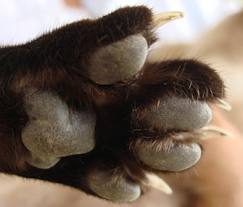 I do clip all of my pets nails myself, so I guess I’m lucky to have pretty good pets, but it’s also a lot of patience and practice! My vet cannot even clip my one cat’s nails, the infamous Leo. He is already so nervous when going to the vet, so he is on high alert, and then after being poked and prodded he is NOT in a good mood. I guess he is a moody cat to begin with anyway, so you can imagine! But I did learn to clip his nails at home, where is he stress-free and more relaxed.
I do clip all of my pets nails myself, so I guess I’m lucky to have pretty good pets, but it’s also a lot of patience and practice! My vet cannot even clip my one cat’s nails, the infamous Leo. He is already so nervous when going to the vet, so he is on high alert, and then after being poked and prodded he is NOT in a good mood. I guess he is a moody cat to begin with anyway, so you can imagine! But I did learn to clip his nails at home, where is he stress-free and more relaxed.
Here are some pointers!
1) Having extra hands is always easier, so if you can have someone help you, the faster the process will be.
2) When your cat is relaxed is the best time, so maybe clip them after a meal. And clip them in a quiet room with no other pets around.
3) First make friends with the paws. Take your cat’s paws between your finger, and press so the nail extends out, then release and give her a treat. Do this once a day, one nail a day, until you’ve done it with all 10.
4) Never cut to the quick. The pink part of the cat’s nail, called the quick, is where the nerves and blood vessels are. Do NOT cut this sensitive area. I always err with caution and cut less, instead of getting really close to the quick; cutting the quick is very painful for your cat. If you do cut it by accident, you can stop the bleeding with a styptic powder or stick.

5) When its time to clip, lay your cat in your lap facing away from you (or if you have someone helping you, in their lap). Take one of her toes in your hand, massage and press the pad until the nail extends. Check to see how much of a trim her nails need and notice where the quick begins. Now trim only the sharp tip of one nail, release your cat’s toe and quickly give her a treat. If your cat didn’t notice, clip another nail, but don’t trim more than two claws in one sitting until your cat is comfortable. Be sure to reward her with a special treat afterward. Please note, you may want to do just one paw at a time for the first couple of sessions.
6) Every two weeks is a good schedule for nail clipping.
7) If you are nervous, or it’s hard to tell where your cat’s quicks are on her nails, you can ask your vet or groomer for help.
What not to do!
1) If your cat resists, don’t raise your voice or punish her.
2) Never attempt to clip when your cat is already agitated.
3) Don’t rush the clipping.
4) Don’t try to trim all your cat’s nails at once in the beginning. I still never clip Leo’s nails all at once, its too stressful for him, but Mya I can because she is much more laid back.
5) If you can help it, I would not declaw your cat. It involves amputation and is really painful.
Good luck!
Does Your Dog Walk You?
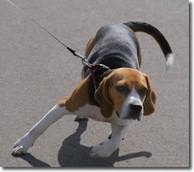 The first rule in teaching your dog NOT to pull, is to never allow him to pull. If you are inconsistent, your dog will test you and continue to try pulling since it pays off for him sometimes!
The first rule in teaching your dog NOT to pull, is to never allow him to pull. If you are inconsistent, your dog will test you and continue to try pulling since it pays off for him sometimes!
You can use various methods and training equipment to help teach your dog not to pull. Here are some guidelines and methods from the ASPCA website:
1) Until your dog doesn’t pull, consider all walks training sessions.
2) Find other ways to get out your dog’s energy while training him, so he is not tempted to pull you on the leash. Most dogs pull because they have excess energy. Try a dog park, fetch, tug etc.
3) Use desirable treats that your dog doesn’t get at other times.
4) Walk at a quick pace. Your dog will stop less, and have fewer chances to pulling you.
5) If your dog gets too excited right before the walk, while putting on the collar/harness, then you need to calm your dog down before leaving.
6) Tell your dog walker that you are training your dog not to pull, and give him or her the methods that you use, so they can continue the training process on their walks.
My 2 favorite methods of training your dog not to pull:
RED LIGHT, GREEN LIGHT
Walk in your intended direction. The instant your dog reaches the end of his leash and pulls, red light! — stop dead in your tracks and wait. When he stops pulling and puts slack in the leash (maybe he turns to see what you’re doing and this makes the leash a little slack), call him back to you. When he comes to you, ask him to sit. When he does, say “Yes,” give him a treat and resume walking (green light). If your dog looks up at you in anticipation of more tasty treats, quickly say “Yes,” and give him one while you keep walking. If he pulls again, repeat the red-light step above. As you’re walking, reward your dog frequently for staying next to you or slightly ahead and for looking up at you. If you do this consistently, he’ll learn that a) if he stays near you or looks at you, he gets treats and gets to keep moving, and b) if he pulls on the leash, the fun stops because he doesn’t get to keep walking and he has to come back to you and sit. If your dog pulls toward an object to sniff or eliminate, carry out the red light, but when he comes back and sits by you, don’t reward him with a treat. Instead, make the object he wanted to sniff the reward. Say “Yes,” and release him to go to the object. (Make sure you go with him toward the object so that he doesn’t have to pull again to reach it.) After a few days or weeks, you’ll find yourself stopping less frequently. Make sure you continue to reward your dog for walking with slack in the leash or he’ll start pulling again. This is the method I used on my pup Valentino, and it worked for him!
LURE AND REWARD
Start with your dog standing at your left side. With several treats enclosed in your left hand, hold your left hand right in front of your dog’s nose (within 1 inch of it). Say “Let’s walk,” and walk in your intended direction. Every few seconds, pop a small treat into your dog’s mouth and praise her for walking along at your pace. You’ll need to frequently reload your hand with treats from your left pocket or from a treat pouch attached to your waist. If she pulls ahead or to the side, immediately stop. Get your dog’s attention by calling her name again. Ask her to sit, and praise her when she does. Then put the treat-loaded hand back in front of her nose and start walking again. Go a little bit farther every day that you practice. After at least a week of daily practice with lured walking, stop luring her along with your treat-loaded hand, and instead just carry your empty left hand in a natural position at your waist with elbow bent. Say “Let’s walk,” and reward her, about every other step you take, with a treat that you get from your left pocket or waist treat pouch. When she can walk along without pulling for several minutes, begin gradually increasing—over many daily training sessions—the number of steps you go in between treats so that your dog is walking longer distances between rewards. Reward her every other step at first, then every 5 steps, then every 10, and so on. Eventually, you should be able to walk with your hand comfortably at your side, periodically (every minute or so) reaching into your pocket to grab a treat to reward your dog.
Lastly, choosing the right equipment is vital. When in training do NOT use a regular snap collar (actually don’t use this ever because dogs can get out of them easily), a regular body harness (gives them power), or a prong collar (unless used with the guidance of a certified trainer). Good choices are a martingale collar, a head halter or head collar such as the gentle leader, or a no pull harness (sensation harness).
Good luck! It is worth the effort, because once your dog learns not to pull, you can have relaxing walks side by side! 🙂
Tip for Tuesday (or maybe Wednesday :) ) BAD BREATH!
Dental issues are a big item in pets, especially seniors. When you go to check on your pet, sniff the ears and check out the mouth. Look for any sign of bleeding gums, tartar buildup or bad breath. If you can’t see a pet’s back teeth because they just look like a big brown row, that’s an indication of massive tartar buildup. It is no longer acceptable to just chalk it up to “Old Age.” Also remember that any time a pet has bad breath or bleeding gums from a tartar buildup, that pet is swallowing all of the bacteria and germs into their organs, and any type of gingivitis or oral infection can take a toll on a pet’s internal organs.
There have been many advances in anesthesia so that pets can have their teeth cleaned no matter what age. Did you know that one of the most common diseases in dogs and cats is periodontal disease?!
So smell your pet’s breath today, and schedule a check up to see if he or she needs a cleaning!
Tip for Tuesday 7/30: Seat Belt Safety for Your Pets
Summer is the time for road trips! ANd what’s more fun than bringing your dog along! But are dogs safe in a car without a restraint? Studies say NO!
If we wouldn’t drive without seat-belts/restraints, why would we let our furry loved ones ride in a car without one?
According to the National Highway Transportation Safety Admin., looking away from the road for only 2 seconds doubles your risk of being in a car crash. Another study of dog owners found:
65% were distracted at least once while driving with a dog;
31% became distracted when their dog climbed into their lap;
23% used their arms to retrain their dogs while applying the brakes;
20% let their dog sit on their lap while driving;
19% took one hand off the wheel to prevent pets from climbing into the front seat.
If this isn’t enough reason to restrain your pet, think about this:
(1) Airbags are made for people, not pets! Never allow your dog to ride in the front seat. Also a dog sitting on the driver’s lap could get stuck between the driver and the airbag. And front airbags can be deadly to a dog- even a dog that is restrained.
(2) Unrestrained pets become forceful projectiles in a crash. If you crash at 30MPH your 10 pound dog becomes a flying projectile exerting 300 pounds of force. At 50 MPH, 833 pounds of force! And thats a small dog!
New Jersey (along with CT, FL, CA, AZ and Maine) already have pet safety restraint laws in place, and more states are following. Fines of $250-1000.
Keep your pet safe from all the bad drivers out there- not you of course, you are a great driver 🙂
Help! My Cat is like Jekyll and Hyde!
Help! Why is my cat biting and scratching me for no reason!
As a cat owner myself, I know how frustrating it is when all you want to do is love and cuddle your cat(s), but sometimes they just want to bite you back! Don’t take it too personal; it’s probably not you! Read these reasons for why your cat might be aggressive, and some tips for dealing with it (from the Humane Society).
PLAY AGGRESSION
Cats love to play, and stalk prey. They pounce and attack! As kittens it might be cute, because their teeth and claws are still tiny, but when they are adults, it becomes a nuisance, and can be a hazard if you have young children around. My advice is to NEVER play with your cats with just your hands, meaning don’t use your hands as pretend “prey;” always use a toy so you aren’t teaching them that attacking your hands is OK. A great toy is a long fishing pole type with a toy at the end, so you can keep your distance. If your cat happens to bite or scratch you, say “UH-UH” and immediately stop playing. Never yell or hit your cat.
PETTING AGGRESSION
Sometimes when you are innocently and lovingly petting your cat, he might take a nip at you out of the blue. Experts aren’t really sure of the reasons why, but most think it’s because some cats are sensitive on certain areas of their bodies, or just have a limited tolerance for being touched. My cats only want to be pet on their own terms! I would stay away from touching their tails, ears and paws. When they start twitching, moving their tail, turning back their ears, grumbling, or even putting their teeth lightly on your skin, etc, walk away. Going forward, I would stop petting them before you notice any of these signs. Another thing you can do is reward your cat with treats. Pet him for a little while, then treat him. He will soon associate petting with food- yum!
REDIRECTED AGGRESSION
This occurs when a cat is aroused (in a bad way) by an animal or person, but has no outlet for his naturally aggressive feelings. Maybe your cat is gazing out of the window and sees another cat or animal outside, and he then gets territorial. Since he cannot get to that cat, he attacks the first thing that crosses his path. What you should do is observe your cat- is he staring intently out the window that he doesn’t notice you, is he not responding when you call, or is he growling or hissing- then don’t mess with him! Clap your hands loudly to break his fixation, or just walk away. If you ever have to break up two cats fighting, just use a squirt bottle filled with water.
TERRITORIAL AGGRESSION
Cats are naturally very territorial. Most of the time they are only territorial with other cats, but sometimes you will meet an extremely dominate cat who thinks he owns the house (like my cat LEO!)! Some very aggressive cats can prevent you from entering or leaving a room even. We had a cat client once, who has since moved, that was extremely dominant. Every sitter I introduced him too, was terrified of him, and most would refuse to watch this cat. I had to fill in on multiple occasions because I am not afraid of cats myself, but I definitely understood their fears! If you live with an alpha cat, you can use the squirt bottle to assert your dominance to let him know who is the boss. I would also redirect a territorial cat’s aggression to a plat toy, preferably one with a long pole, so you don’t have to get too close.
OTHER REASONS
If your cat’s behavior has suddenly changed, there could be a potential medical issue. Take him to the vet for a check up. If he is fine, then he might just need behavior modification. Maybe he is just stressed out at home (too much noise, too many people or other pets around). Consider confining him to one room, that is quiet and less stressful and see if this works. You can also always contact an animal behaviorist.
GOOD LUCK!
How Much Water Does Your Pet Need?
Most household pets do NOT drink enough water!! This can cause health problems. But do you know why your pets might not be drinking enough water?
On the average, a dog should drink 1/2 to 1 ounce of water per pound of body weight each day; whereas cats require 2-4 ounces of water daily.
Water is essential for all life; without water, organs do not function properly. Having a constant supply of fresh water is crucial to your pet’s health. Water is the most important nutrient in your pet’s body, besides oxygen. Many pet owners think their pet is getting enough water because they leave a bowl of water for them, but they can be mistaken.
Follow these suggestions to increase your pet’s water intake, and make sure your pet stays hydrated:
1) Clean and disinfect your pet’s water bowl at least once a day.
2) It is best to change the water in your pet’s bowl three times a day, but at the very least, once a day. The fresher the water, the more appealing it is to your pet to drink!
3) Pets prefer cool water over warm water.
4) Wet food can provide another source of water to your pet. If you are just feeding your pet dry food, they will require more water. On the average, dry food has 10% water content, and wet food has 80% water content!
5) A pet fountain is a great way to help your pet drink more. It circulates the water, keeping it cool and cleans out impurities as well.
6) If you are exercising your pet, he will require more water, so don’t forget to bring some water along for the ride!
7) In the summertime, your pet will require more water.
To check your pet’s hydration level, pick up a loose piece of skin by the shoulder blades, and release it. If it falls back into place quickly, then your pet should be hydrated. If not, this can be a sign that your pet is dehydrated. In any case, if you are worried about dehydration, always contact your vet!
House Training Tips!
Some clients have recently asked us about house training, so we thought we would share some tips!
(1) Keep your pup on a regular feeding/watering and walking schedule.
(2) Your pup’s walking schedule depends on his age and how far along he is in house training. Young puppies always need to go out first thing in the morning, last thing at night, and shortly after naps, playtime and eating. Other than that, a typical walking schedule is every hour for how old your pup is in months. So if you have a 3 month old pup, he should be able to hold it 2/3 hours (of course this varies).
(3) Your puppy always needs to be monitored in your home, so as to not let him have accidents. Watch for signs such as whining, barking, and sniffing. Be aware of your pup’s signals that he has to go!
(4) When you are not around, or not able to watch your pup, he should be in a crate. Crate training is an excellent technique for helping with house training, and keeping your pup safe while he is still young, and curious! The crate should not be too big. Gradually, as he gets older and grows you can increase the size of the crate, and eventually give him more and more space while still keeping his environment safe.
(5) When you do take him out to go to the bathroom, praise and treat him afterwards. I would give him the same treat for going outside, and only give him that treat for doing just that. Also, take him to the same spot each time to go to the bathroom.
(6) If you find your pup in the act of eliminating indoors, startle him, so he might stop mid-stream, and take him directly outside to finish. Then reward and praise. If you find that he elimiated but did not catch him in the act, you cannot scold him, because he will not relate that to the wrong act.
Good luck!!
The Overweight Cat
Stop denying your cat is not overweight! Chances are that he or she probably is….and if you have 2 cats, the chances are even greater that at least 1 of them is overweight!
Obesity is a common problem in pets, even in cats! I myself have 2 cats, one might be considered a little overweight, so I need to start paying closer attention to these pointers as well!
I think we tend to forget or not think about our pet’s health in the same way we think about our own. Being overweight has the same effects on pets that it does on people- it can cause stress on the body, and increase their risk of diabetes, liver problems and joint pains.
Things to keep in mind!
(1) It is much easier to keep your pet from gaining weight, then to try to get your pet to loose weight.
(2) To test if your pet is overweight, see if you can feel the backbone and palpate the ribs. If you cannot feel your pet’s ribs without pressing, there is too much fat. In addition, you should see a noticeable “waist” between the back of the rib cage and the hips when looking at your pet from above.
(3) Talk to your vet to determine your pet’s caloric requirements, selet a suitable food and calculate how much to feed.
(4) Increase physical activity of your pet- more play sessions!
(5) Find the hidden calories- are you giving your pet too many treats? They count too!
(6) If you get that guilty feeling when your pet looks at you for food/treats, then you are probably doing what I do, and give in, and give them what they want! If this is the case maybe you should feed your pet several small meals throughout the day, instead of 1 larger meal.
(7) Don’t leave food down all day for grazing.
(8) Provide non-food related attention. If your pet comes up to you and demands food like mine does, instead of food, get out their favorite toy and have a play session. Or you can even try to teach your pet a new trick! Yes, even cats can learn, I’v done it!
One of Most Common Dog Dangers

One of the most common dog dangers that people don’t think about, that probably almost everyone has in their house is….. XYLITOL.
What is xylitol? Xylitol is a type of artificial sweetener found in many sugar-free chewing gums, candies and baked goods. In dogs, it can cause a sudden drop in blood sugar. They symptoms of this dangerous condition include depression, lethargy, weakness, incoordination and seizures in some cases.
Xylitol poisoning can occur in as little as 30 minutes after ingestion. Thats a big problem when you consider that dogs are so darn good about getting into things, and can do it before we even notice them. Also another problem is, sometimes when dogs get into things, they clean up (eat) the evidence too, i.e. the wrappers!
These kinds of things do happen, so please be careful. It is safest not to give your dog any human foods. But I do give my pup carrots and the occasional peanut butter in his kong 🙂
Adopting A Kitten? 10 Reasons Why 2 Are Better Than 1!
1) The most obvious reason is that you are saving 2 lives, instead of just 1!
2) If you have an older already established cat, if you get 2 kittens, they they will most likely play together instead of harassing the older cat.
3) You may experience less behavior problems with 2 kittens. Behavior problems often stem from boredom.
4) Seeing 2 kittens curled up together for a nap is the cutest thing ever!
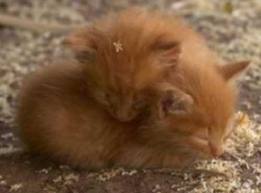
5) 2 kittens will more likely not get in as much mischief during the day because they are not lonely and have each other to play with.
6) Kittens learn by copying, so if one picks up a habit fast, like using the litter box, the other one will copy. Also they help groom each other, which is another cute sight!
7) If 1 kitten is finicky about food, usually seeing the other eat will help him get over his pickiness.
8) It is so much fun to watch 2 kittens play with each other!
9) They help each other burn off energy!
10) 2 kittens who grow up together will most likely be lifelong friends, and why would you not want that for your furry friend? They will each have a friend for life!
I have 2 kitties, Leo and Mya, and I got them when they were 12 weeks old, only a couple weeks apart. Never again, would I get just 1 kitten. They love each other!
Here they are as kittens wrestling!
Clicker Training Your Pup
I recently bought a clicker, why not! Im taking Valentino to Agility class, and they mentioned clicker training, so I wanted to share some tips I found!
Clicker training is a form of positive reinforcement training. The sound of the clicker marks a positive behavior.
Things to keep in mind:
1) A click equals a treat! After you click, to mark a positive behavior you always have to give a treat to your dog.
2) Give the treat as soon as possible after you click. It should only take 1-2 seconds to give him the treat. If you do not, then he might not see the connection between the clicker and the treat.
3) Timing is important! It is important that you click the clicker at the exact moment that your dog completes the behavior asked of or task asked to do.
4) Keep your clicker handy to capture behaviors. Capturing behaviors is a great way to teach your dog new behaviors with very little effort on your part. Keep your clicker and a handful of treats handy, and whenever you catch your dog doing something you like, simply click and treat. You will be amazed at how quickly your dog can learn!
5) Go back a step. If you find your dog confused about certain behaviors, take a step back. For example, if he cannot hold a stay for 30 seconds, and breaks it, go back to a 10 second stay. Slowly move forward. If your dog is making mistakes, it might be because you moved ahead too quickly for him.
6) Keep your clicker training positive! If you find yourself getting frustrated end the sessions. Keep sessions short, 5-10 minutes. Always end on a positive note!
Stop Your Dog From Jumping!
 Stopping your dog from jumping can be a daunting task. My puppy is 2 and he still jumps on people, but mostly at the dog park, when he’s really hyper and running around with his ball in his mouth. Luckily he is only 44 pounds (however some people might say that is big). In contrast, there is a 125 pound Great Dane at the dog park that jumps, and the outcome is a little bit different needless to say!
Stopping your dog from jumping can be a daunting task. My puppy is 2 and he still jumps on people, but mostly at the dog park, when he’s really hyper and running around with his ball in his mouth. Luckily he is only 44 pounds (however some people might say that is big). In contrast, there is a 125 pound Great Dane at the dog park that jumps, and the outcome is a little bit different needless to say!
When your dog is a puppy, it is cute when he jumps, but when he turns into an adult, it is more a nuisance and could be dangerous (and can wreak havoc on your wardrobe!)
Teaching your dog not to jump takes time, patience, and some training and management.
TRAINING
First you have to teach your dog that if he jumps he gets NO attention. Turning your back to him is a great way of doing this. Never use your hands to push him off you because this is considered attention.
Then teach your dog if he sits, you will then pet him and give him attention.
One of the most important things in training is CONSISTENCY, so make sure your whole family is on the same page!
MANAGEMENT
When teaching your dog not to jump, you must manage every situation so he doesn’t have an opportunity to jump. Things you can use to help you manage:
(1) Keep your dog on a leash around people you know he will jump on, so you can control him. For example, a lot of dogs jump on new visitors to your home, so put a leash on your dog before answering the door.
(2) Confine your dog to another room when you are at your home, and have visitors over.
(3) You can also put your dog in his crate (but not as punishment) when you are at your home and have visitors over.
All of these things will prevent your dog from jumping, and possibly reinforcing bad behavior while he is in the learning phase.
Here are some other useful tips:
(1) If your dog jumps on you when you come home, then keep your greeting low key. If he does jump, turn your back and ignore him. Tell him to sit, and when he does then praise him and say hello to him.
(2) If your dog jumps on you when you are sitting then stand up and ignore him. Don’t push him or use your hands, just ignore him.
(3) If your dog jumps up on other people and if you have your dog on a leash, you can control him and tell him to sit. Then when he listens, you can tell the other person to acknowledged him, and you can even give that person a treat to give him. If you don’t have your dog on a leash and someone is approaching you, you can put your dog in a sit and stay, and then praise and reward him if he stays there when they person has approached. Of course if he does jump, you can ask the person to turn his back on the dog, and not pet him. If you are at an off-leash park or somewhere where your dog is not on leash, and a person says ITS OK when your dog jumps on them, you can always in a friendly way tell them you are training your dog not to jump, so they know its not OK with you.
Good luck and remember stay consistent! It can be a lot of work, but you are stimulating your dog every time you work with him, so this is actually great mental exercise for your dog!
Holiday Time & Pets
Holidays can be dangerous to your pets. In regards to Christmas trees, pine tree water can be poisonous to your pets. Use an enclosed tree stand or cover open tree stand bases. Secure your tree to the wall with strong wire or twine. Also, decorating with glass ornaments, tinsel, ornament hooks or electrical wiring all pose significant danger to your pets by ingestion or contact. Be sure to unplug lights and decorations your pet has access to when you are not home! Do not put presents that have food items in them under the tree. Holiday plants that are poisonous to pets include the berries of the mistletoe, holly, hibiscus, Christmas roses and poinsettias, so do not buy those, and if someone brings you a plant as a gift, maybe you can keep it outside or on a shelf where your pets can’t get to it!
For New Years celebrations, make sure your pet is safe too. If you are going to host a party, secure your pet in a quiet area away from boisterous activities. Noisemakers and fireworks can greatly distress pets and cause them to panic and try to run away (so don’t leave them outside unattended). Inform guests to not give any food or scraps to your pet, and also warn them about where they should leave their plates and drinks. Table food, especially large amounts, or if your pet isn’t use to people food, can cause havoc on your pet’s digestive tract. Also, party decorations and novelties can also become dangerous to your pet if eaten.
HAVE A SAFE & HAPPY, HEALTHY HOLIDAY!

